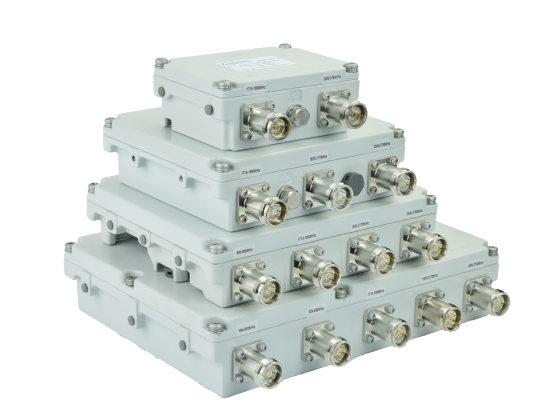According to design and manufacturing principles and production processes, passive devices used in the current network can be divided into cavity and microstrip types.
Cavity devices mainly include cavity components, cavity filters, cavity couplers and hybrid, and microstrip devices mainly include microstrip converters, micro-band couplers and micro-band bridges.
Cavity devices are generally larger in volume than microstrip devices, while processing process and manufacturing difficulties of cavity devices are greater than microstrip devices, and the cost is higher than that of microstrip devices. However, cavity device insertion loss is small, long service life, and high-power capacity, especially power resistance is better than microstrip devices.
Common types of connectors for passive devices are N, BNC, SMA, TNC, DIN7-16, and so on.
Because the N-type and DIN7-16 connectors are robust and reliable with threaded locking connections, they have a high level of protection, good weather tolerance and better interoperability. The DIN7-16 is ideal for high-power and outdoor applications. These two series of connectors are most widely used in wireless communication engineering.
There are relatively few passive devices and simple structure compared with active devices in wireless communication.
Passive device manufacturing technology and process threshold is low, but passive device quality is good or bad, directly affect the network quality and operational stability.
Due to the rise of computer-aided design software, passive device principle design and parameter customization tend to standardize and program. Therefore, there are no bottlenecks in the design of the device manufacturers. However, due to cost reduction or production capacity factors, improper and lack of material selection and processing processes, is the result of passive device performance indicators cannot meet the design requirements of an important reason.
The main factors affecting the quality of passive device products include design, material selection and processing process. Design to be accurate, material selection to meet the requirements of engineering devices, processing technology to ensure the realization of the design accuracy requirements, and ensure that the product is stable and reliable.
The processing of passive device cavity should ensure the precision of processing. Cavity surface cleanliness has a greater impact on the overall performance of the device, glitch angle will lead to arc noise and poor PIM.
Device processing should take active and effective measures in water release, corrosion prevention, dust prevention and so on, taking full account of the working environment of the actual network.
Such as in the cavity device processing is the use of CNC machine processing or die-cast molding, connecting fastening screws using rust-proof metal, device surface anti-corrosion treatment at the same time using conductive sealant sealing.
High-quality high-power general internal conductor and core integration completed, using DIN or N-type connector, the use of cavity air structure, cavity using aluminum alloy die molding, first copper plated after silver plating treatment, seal seamless, smooth surface.
The outer conductor of the connector is brass or ternary alloy and nickel plated, and the inner core is silver plated with a highly malleable palladium bronze.
We, Jing Xin Microwave, are dedicated in design and manufacture passive components with wide range of standard and custom-design components with leading performance from 50MHz to 50 GHz. Through more than 10 years of continuous innovation, we are able to keep providing RF solutions with professional optimization.
Please check our products:https://www.cdjx-mw.com/products/
Hope you may find what you’re looking for, if not, we also provide customization with your drawing.
Post time: Nov-05-2021






